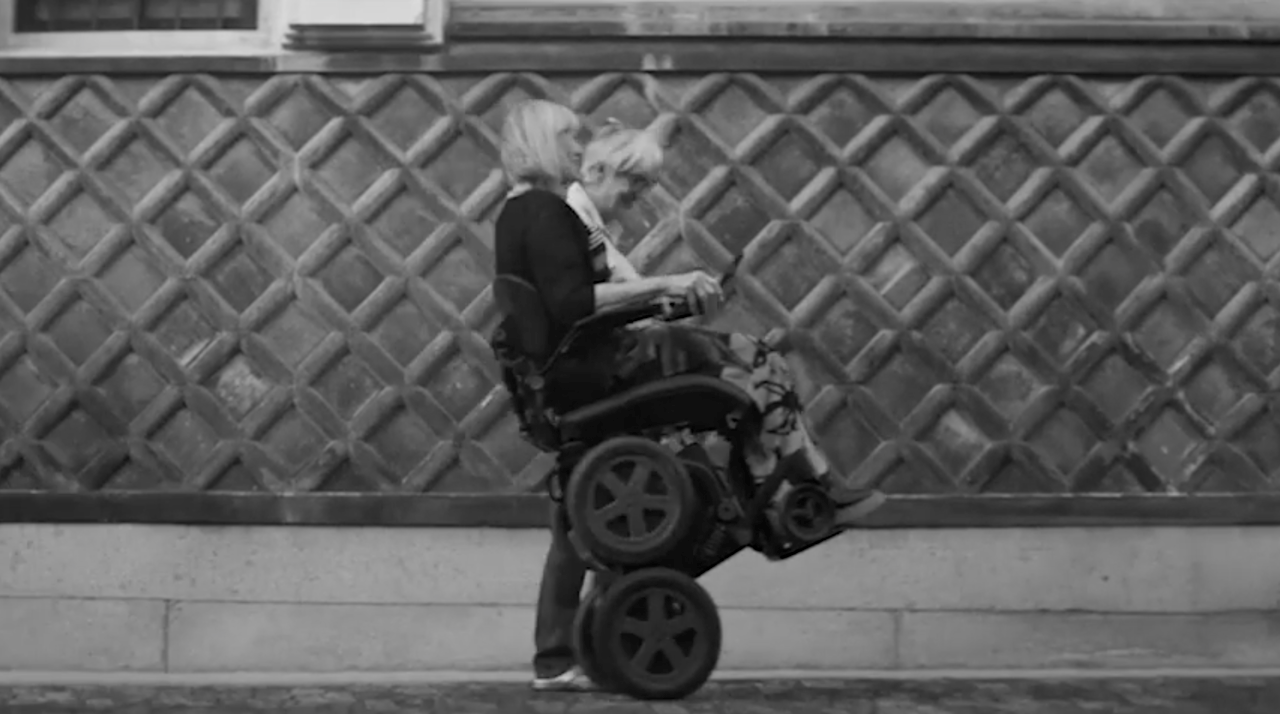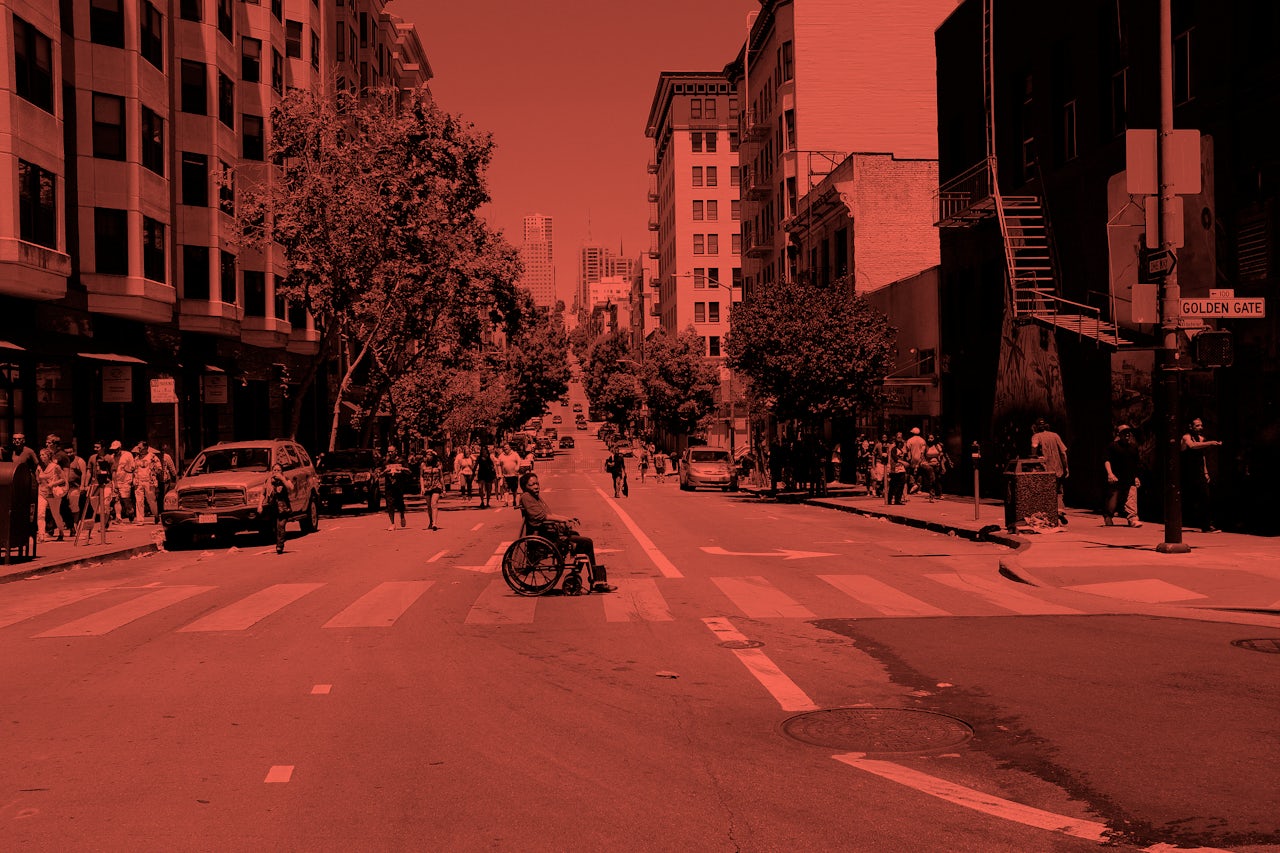Before Dean Kamen became the guy who invented the Segway, he invented a wheelchair. Although he doesn’t like when you call it that. “It’s NOT a WHEELCHAIR!” he yells. It’s an “autonomous robot carrying a human payload.”
The iBOT, short for The Independence BOT 3000 Mobility System, was a wheelchair. Which, for the record, is not a bad thing. And it was a wheelchair unlike any other: one that could balance on two wheels and climb stairs and go offroading. Kamen’s company DEKA partnered with Johnson & Johnson to start selling the iBOT but by 2009 it was discontinued. Just getting the chair FDA approved cost over $50 million, Kamen said, and most insurance companies wouldn’t cover the $25,000 cost to users. Johnson & Johnson decided it was too expensive to sustain production costs. The device was expensive, imperfect, and hard to get; it couldn’t be fitted with a power chair, which many wheelchairs need to stay stable in the seat, so it was only usable by a small slice of the wheelchair-using population. Kamen's refusal to call the iBOT a wheelchair is indicative of his broader view that disabled people are in need of saving and fixing, and no wheelchair users were involved in the original invention and design. But for some users, it changed their lives. Devotees formed support groups, wrote letters to Medicaid and Dean Kamen himself, and started up a Save the iBOT Facebook page that now has more than 1,200 members. None of it worked. “It saddens me beyond description that J&J no longer makes the ibot,” user Doug Woodward wrote on Facebook.
Then in May of last year, there seemed to be good news for iBOT lovers, many of whom had kept in touch over the years to trade tips on how to keep their aging chairs running. Kamen’s company DEKA had partnered with Toyota, and they announced they were bringing the iBOT back. “This agreement will help DEKA to proceed with plans to complete the development and launch the next generation iBOT motorized wheelchair,” according to the press release. Journalists repeated it: The Verge, TechCrunch, Mashable, Bloomberg, USA Today, and more all reported that with the help of Toyota, the iBOT was coming back. “A Reboot For Wheelchair That Can Stand Up And Climb Stairs,” NPR wrote. And just last week, Toyota released a commercial tied to its Olympics sponsorship titled “Mobility for All,” which showed a glimpse of what appears to be a revamped iBOT going down some stairs.
Along with being hyped by the media, the recent Toyota announcement and commercial was excitedly covered on several wheelchair resource sites. In the Facebook group for iBOT users, people reacted to the Toyota news with glee. “Wonderful now I hope they can fix my sons that has been sitting in a corner for two years,” wrote one woman. “This is amazing news for all of us getting better accessibility and mobility. Thank you Dean Kamen and everyone on the iBot team who never let this technology go away,” wrote another member. “God Bless Dean!” someone else chimed in.
But although Toyota has used the iBOT in its marketing materials, it is unclear how committed the $170 billion company is to bringing it back.
We talked about iBOT on our daily podcast, The Outline World Dispatch. Subscribe on Apple Podcasts or wherever you listen.
After the announcement, I got in touch with Toyota and asked what the specific timeline was for helping revive the iBOT. A spokesperson told me they had no actual plan. “We are discussing ways in which Toyota can assist in developing future versions of the iBOT, but a final decision has not been made,” Rick Bourgoise, a press person at Toyota, told me at the time. “There is no timetable.”
When I followed up after the commercial was released last week, the answer was the same: no plan, no timetable.
“There is not any new news to announce when it comes to iBot itself,” another Toyota spokesperson told me. “The Olympic and Paralympic campaign does, however, give us the ability to communicate the great work that DECCA [sic] and the Toyota team have done to promote the concept of ‘Mobility for All.’” So Toyota is happy to use the iBOT to promote the “concept” of mobility, but doesn’t seem to have much real drive to actually bring the iBOT back. The fact that they also misspelled DEKA’s name seemed fitting.
This cycle is a common one. Companies know that accessibility projects can garner great press. They also probably know that many journalists are unlikely to follow up and see whether the big promises are actually coming true. So they flaunt their minimal or nonexistent ties to accessibility, reap the glowing media coverage, and let the projects slip quietly into the night.
BMW got great press for making four special chairs for the Paralympics, but it seems to have stopped at those four. The Dot, a braille smartwatch, is a darling among journalists who call it the “first smartwatch for the blind,” but all it does is display some text from your phone in braille. Apple’s smartwatch is actually far more useful for blind users. Companies also advertise products as being accessible, but these claims are rarely put to the test. Google is a repeat offender when it comes to claiming accessibility brownie points while failing to provide truly accessible tech, said Kit Englard, an assistive technology specialist. “If you read anything from Google it says: Google is accessible, it works with screen readers. Eh, it doesn���t really,” she says. Google Docs and Google Drive are both notoriously hard to use with a screen reader (a system, usually incorporating audio, that blind and low-vision people use to access visual content). “The way to force a screen reader to work with Google Docs, you have to go into your screen reader, turn it off in some ways, and then go back into Google Doc,” Englard said. “You have to memorize a whole series of commands that are completely different from any other commands you’d be used to.”
Companies know that accessibility projects can garner great press.
Vaporware — the term for products and features touted to the press that never materialize — is endemic in tech. When that non-existent product is a smartwatch or a sex robot, the harm is minimal. But when companies claim they are building products for people with disabilities and then don’t, Englard says that does real damage. More and more big companies are adopting systems like Google Drive, thinking that they are accessible, when in fact they’re not, which could lock disabled people out of jobs and promotions. “When they ask ‘is our equipment accessible to you?’ and the answer is no, that person can’t have that job. It’s not okay to lock people out of educational opportunities or social engagements or research,” Englard said. “Think of how many surveys are done on Google Docs these days.”
In the case of Toyota and the iBOT, the harm comes in the form of false hope. When someone posted the most recent Toyota commercial featuring the iBOT in action to the Save The iBOT Facebook page, people got excited. “Yes!!!” wrote one member. “That would be a miracle,” wrote another.
Did Toyota ever intend to release the iBot? It’s unclear. What Toyota wanted was the technology inside the iBOT, according to the press release and Bourgoise, the press person I spoke to last year. “Toyota is licensing certain intellectual property,” he told me. “At this point, the parties have only reached an agreement on a licensing arrangement. There is no current agreement for Toyota to manufacture and sell the iBot.”
Kamen and DEKA did not respond to questions about the current status of the iBOT, but I spoke to Kamen a year ago about the Toyota partnership. At the time, he told me that Toyota had initially approached him about DEKA’s patent portfolio. Toyota saw in DEKA a team that could help them improve and innovate on the sensors in their cars. It was Kamen who suggested the iBOT connection. He wrote them a letter back saying he’d love to work with them, if they would also help him revive his definitely-not-a-wheelchair passion project. Toyota agreed, and seeing a chance for good PR, put out a press release titled “iBOT Poised for a Comeback.”
Kamen also appeared in a video last year announcing the Toyota partnership. “We're proud to say that we are now getting the full support of the Toyota company,” he said. But he acknowledged when I spoke to him that the iBOT’s future was sketchy. “We do not have any well developed plan,” he told me at the time. “[Toyota is] not actively involved in developing this thing, and we have yet to figure out how to leverage them.” But he seemed convinced that with Toyota’s resources and expertise in supply chains, he could make the chair better and cheaper.
A year later, that possibility seems more and more remote. The iBot remains expensive to produce, comes with a pile of FDA red tape, and has some design issues. In theory Toyota, a deep-pocketed company with a robust R&D department and experience selling mechanical objects at a similar price point, seems like an ideal partner to bring the iBot back to life — but it’s becoming obvious that Toyota and the iBOT’s users are not on the same page.

